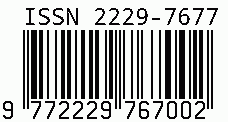
International Journal on Science and Technology
E-ISSN: 2229-7677
•
Impact Factor: 9.88
A Widely Indexed Open Access Peer Reviewed Multidisciplinary Bi-monthly Scholarly International Journal
Plagiarism is checked by the leading plagiarism checker
Call for Paper
Volume 16 Issue 4
October-December 2025
Indexing Partners



















Literature Review on Solar Power Prediction Using Bi-LSTM Classifier Considering Different Uncertainty Models
| Author(s) | Mr. TATOBA NAMDEO KHANDEKAR, Dr. PRASAD D KULKARNI, Prof. Dr. SHRINIVASA MAYYA D |
|---|---|
| Country | India |
| Abstract | Accurate solar power prediction is critical for the efficient operation and integration of photovoltaic (PV) systems into modern power grids. The inherent uncertainty in weather conditions and sensor data presents major challenges for forecasting accuracy. While recent advances in deep learning, particularly using LSTM and its variants, have significantly improved performance, these models often ignore uncertainty in input data. This literature review critically analyzes state-of-the-art techniques for solar power forecasting, highlighting the role of metaheuristic optimization, hybrid neural models, and deep learning algorithms. Special attention is given to recent studies utilizing Bi-LSTM networks and the incorporation (or lack thereof) of uncertainty models. The review identifies key limitations in current approaches and underscores the need for a framework that explicitly integrates uncertainty distributions with Bi-LSTM for enhanced prediction accuracy. |
| Keywords | Solar power,Bi-LSTM networks,Uncertainy models |
| Field | Engineering |
| Published In | Volume 16, Issue 3, July-September 2025 |
| Published On | 2025-07-17 |
| DOI | https://doi.org/10.71097/IJSAT.v16.i3.7048 |
| Short DOI | https://doi.org/g9t2w9 |
Share this


CrossRef DOI is assigned to each research paper published in our journal.
IJSAT DOI prefix is
10.71097/IJSAT
Downloads
All research papers published on this website are licensed under Creative Commons Attribution-ShareAlike 4.0 International License, and all rights belong to their respective authors/researchers.

